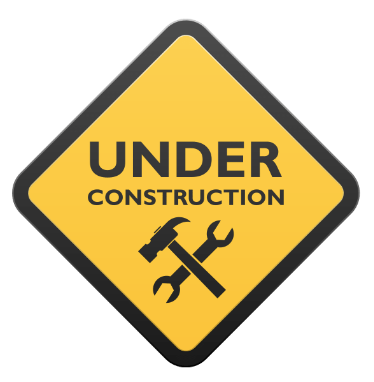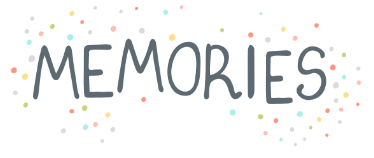No, I’m not singing one of the hit songs to “The Sound Of Music” (Trust me, nobody wants to hear that). I am talking about a few of my memories from when I was a teacher!! My family is doing a complete overhaul of our house (to make way for Baby Boy Algrim in December!!!), we have removed ALL items from our attic and from storage to see what we can reuse for baby #2 and what is no longer viable.
 In this process I have discovered that I saved so many things from when I was a teacher (8 years ago). I think in my mind I thought I would need them if I ever returned to the classroom or that I would be the “teacher-mom” and use the materials with my daughter… clearly as this is the first time I have gotten them out of the attic, using them with my daughter didn’t happen, and if I returned to the classroom at this point most of the materials would be out-dated. But for some reason, I just can’t part with them.
In this process I have discovered that I saved so many things from when I was a teacher (8 years ago). I think in my mind I thought I would need them if I ever returned to the classroom or that I would be the “teacher-mom” and use the materials with my daughter… clearly as this is the first time I have gotten them out of the attic, using them with my daughter didn’t happen, and if I returned to the classroom at this point most of the materials would be out-dated. But for some reason, I just can’t part with them.
I LOVED teaching, especially at the beginning of the school year when I had a “fresh start”  and everything seemed possible. As I reminisce on the time with my students, my favorite projects, activities, and events, I wonder if any teachers are still doing similar projects? These activities took so much time and effort to prep but were always SO worth it when I saw the enjoyment and learning that took place! In an effort to continue to share great ideas I thought I’d break down a few of my favorite past times from the classroom in case you need a little inspiration, or were looking for a few new ideas:
and everything seemed possible. As I reminisce on the time with my students, my favorite projects, activities, and events, I wonder if any teachers are still doing similar projects? These activities took so much time and effort to prep but were always SO worth it when I saw the enjoyment and learning that took place! In an effort to continue to share great ideas I thought I’d break down a few of my favorite past times from the classroom in case you need a little inspiration, or were looking for a few new ideas:
- I can’t take credit for this one, but when I taught 3rd grade our AMAZING media specialist/librarian organized an all school interdisciplinary unit through the school library. The yearly Iditarod Sled Dog Race!! I was a bit skeptical at first, thinking that some of my instructional time with my students would be taken away for this when we had state testing right round the corner, but I was blown away by all the learning that took place!!
Logistics: Through the library, each class drew a Musher out of a hat that they would track and root for throughout the week-long race. Each student had a card-stock Huskie that they decorated and named, then we hung their card-stock Huskie on the walls throughout the school. What activities the classroom did was dependent upon each individual teacher, but here are a few activities my students did across the content areas:

- Reading – We spent time researching our Mushers, the history of the Iditarod, researching Alaska, and reading both fiction and non-fiction books about the dogs and the race. If you are looking for book ideas so you can implement this in your classroom: Check out this book list here, broken down by grade and fiction/non-fiction!
- Writing – We did writing prompts about the race experience, pretending we were a Musher and the experience, comparing/contrasting sled dog care vs. their pet’s care and needs, etc..
- Math/Social Science – We had a map of the race in our classroom where we would map out our Mushers progress, calculate the number of miles they traveled and miles to the next checkpoint. We checked the GPS analytics and our Mushers MPH between checkpoints to discuss rate of speed and endurance.
- SEL – Students would research the dogs and their temperaments, then would write descriptions of their classmates’ temperaments/personalities in a positive way showcasing their strengths.
- Science – Discuss elevation throughout the race and the effect it plays on temperature/climate.
As you can see the Iditarod would not only be educational but fun too! The next race is March 1-7, 2023 so you have plenty of time to prep and prepare to bring this idea into your classroom/school! I would love to help with this too so please feel free to contact me if you want to discuss this idea further, and if you want more ways to implement this in your setting/grade level, check out the iditarod edu website!

2. History came alive during my biography unit as we created a living wax museum! Again, another interdisciplinary unit, but this was much more student directed. This was by far one of my favorite units as it allowed us to open our classroom doors to other classrooms, our families, and even the press!
Logistics: Students selected a famous individual from history, it could be any person they were interested in learning more about. At the end of the unit we created a live wax museum where students wore a button that said “start”, they pretended to be made of wax, but when their button was pushed they came alive to recite the story of their life. This sounds simple, however the learning and research skills that were learned will be beneficial for these students for years to come:
- Reading – Obviously there is a ton of research and reading that takes place after students select their person from history so that they become an “expert” on this person and their life. The research can be done online or in books which is a great way to teach students research skills as well.
- Writing – As the research is taking place students are taking notes and then synthesizing their notes to create a skipt, in first person, on their individual’s life accomplishments.
- Math – Many times students needed to calculate the age their individual was when they passed away, or when they became successful with only knowing the year that he/she was born and passed away.
- History/Science – All of the individuals selected had to have become “famous” before my students were alive. This was a great way for them to learn about a different time period and what it was like to live in that era. Additionally, many successes were due to scientific discoveries that were researched about as well (example – Thomas Edison, Albert Einstein, etc.)
- Arts – This live museum was a form of art. Costume creating, memorizing scripts, and acting. I was always shocked with how some of my more timid students shined on the day of the museum, it was great to see them in the spotlight and out of their shell.
This project takes time and patience as students research, write, create their costumes, and memorize their script. It should be celebrated so I always opened our classroom to anyone and all (board members, superintendents, other classes, parents, and even the press). Please note, from personal experience, to have students move a bit and shuffle their feet when they aren’t “live” so that they don’t pass out from being a statue. As I first implemented this activity, I found that some students took their statue time very seriously and got lightheaded, during those first few years of “ironing out the kinks” I often had a visit from the paramedics to assist a student during the performance too!
3. My last favorite thing to share was my mystery unit. I implemented the mystery unit as a first and third grade teacher, just and varying degrees. The higher level thinking and collaboration that took place during these activities blew me away!
Logistics: Your mystery unit can take many variations depending on your purpose,  grade, and time you have for the activities. I always started my unit out with an escape room to get students working in teams and thinking about riddles, problem solving, and mysteries. The escape room was a modified BreakoutEDU that I had created and morphed throughout the years, but it usually involved transforming the room into a completely different setting where they had to solve a mystery to escape the room. From there my students’ interests were sparked and they were starting to think like detectives which is just what you want/need as you embark in this work:
grade, and time you have for the activities. I always started my unit out with an escape room to get students working in teams and thinking about riddles, problem solving, and mysteries. The escape room was a modified BreakoutEDU that I had created and morphed throughout the years, but it usually involved transforming the room into a completely different setting where they had to solve a mystery to escape the room. From there my students’ interests were sparked and they were starting to think like detectives which is just what you want/need as you embark in this work:
- Reading – Reading mysteries to your students is so fun. You can actually see the wheels turning in their heads as they collect evidence, predict the solution, and learn about the characters. If you are looking for good mystery books to engage your students with, be sure to check out this list from We Are Teachers.
- Writing – I had my students taking notes in their detective notebooks as we read mysteries and tried to solve the riddles. Once, proficient in the structure of a mystery each student wrote their own mystery story for our classroom library!
- Math/History/Science – There are many mysteries where students need to research aspects of history or science to gather more clues and solve the riddle. Math can also play an important role in solving riddles throughout engaging mysteries.
In order to get your “bang for your buck” with a mystery unit, be sure to take the time to plan ahead of time, try not to build the plane as you are flying it with this one. Take it from my experience, that when proper planning isn’t done beforehand it can confuse students and can throw off the understanding/concepts of a mystery, surprisingly this unit always required a lot of tangible materials I had to bring from home or purchase in advance as well!
While it has been very emotional purging through my old teaching projects, books and materials it is great to know that I can continue to share these ideas and resources so that other classrooms and students can enjoy these experiences. Enjoy!

Katie Algrim – Director of Innovative Professional Learning
(t):630-444-3044
(c):630-675-4447
(e):kalgrim@kaneroe.org
